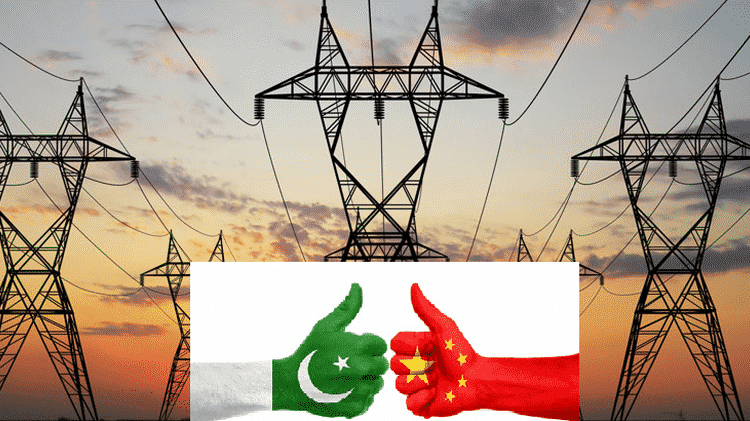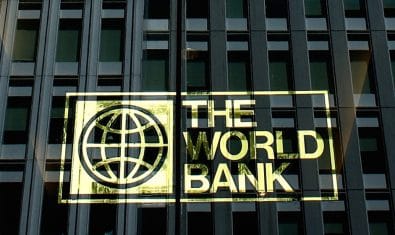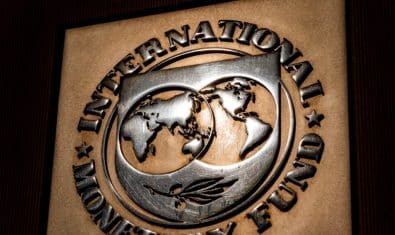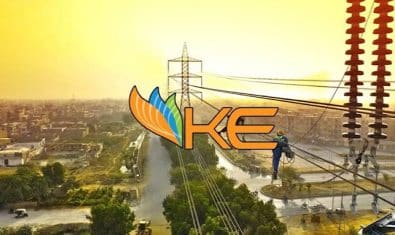China Pakistan Economic Corridor (CPEC) holds great importance for both countries.
Where China’s loans and business investments will bring it profits, Pakistan’s economy might get the industrial boost it needed for a long time.
Electricity production has been the Achilles heel for Pakistan in promoting its industry and economy, however, several new power projects, developed under CPEC, might improve the situation a lot in the coming years.
The projects are divided into two categories. The first one will finish by December 2018 while the next phase will be finished around 2022.
These priority projects will add close to 7,000 MW of electricity to Pakistan’s national grid
The government has not done a good job of marketing the benefits of the projects being undertaken. To help you better understand what CPEC is doing, we have compiled this list for you.
We have split the list into two parts to make it easier to read. The first one will mention projects finishing soon while the other will include projects which might take longer or are still being planned.
While we occasionally hear about a few of the major power generation projects, let’s take a detailed look at how much electricity generation is possible, what will fuel the new power plants, and how long until the power plants are up and running.
Port Qasim Electric Company
- Capacity: 2×660 MW = 1320 MW
- Fuel: Coal (Imported)
- Estimated Development Cost: $1.98 Billion
- Location: Port Qasim, Sindh
- Financing: Independent Power Producer (IPP)
- Estimated Commercial Operation: First Quarter 2018
Being developed and sponsored by Sinohydro Resource Ltd & Al Mirqab, this independent power project is one of the oldest power projects under the CPEC. The plant will make use of imported coal when it becomes operational. The project is being supervised by the Ministry of Water and Power and the Private Power and Infrastructure Board (PPIB).
By using Supercritical technology, this power plant will have an efficiency of around 42% resulting in a slightly lower price per unit for electricity compared to normal coal power plants.
Sahiwal Power Plant
- Capacity: 2×660 MW = 1320 MW
- Fuel: Coal (Imported)
- Estimated Development Cost: $1.60 Billion
- Location: Sahiwal, Punjab
- Financing: Independent Power Producer (IPP)
- Estimated Commercial Operation: Second Half 2017
It is being developed and sponsored by the Chinese Huaneng Shandong Rui Group. The private power plant will make use of imported coal when it becomes operational. The project is being supervised by the Ministry of Water and Power and the Punjab Power Development Board (PPDB).
By using Supercritical technology, this power plant will have an efficiency of around 42% resulting in a slightly lower price per unit and less CO2 emissions for electricity compared to normal coal power plants.
Engro Thar Mine Mouth Power Project
- Capacity: 4×330 MW = 1320 MW
- Fuel: Coal (Local)
- Estimated Development Cost: $2.00 Billion + $1.47 Billion Associated Cost
- Location: Thar Block-II, Sindh
- Financing: Independent Power Producer (IPP)
- Estimated Commercial Operation: Late 2018 or early 2019
It is another Chinese company, China Machinery Engineering Corporation (CMEC) / Engro Power Gen, which is developing and sponsoring this project. The independent power plant will make use of local coal from Thar when it becomes operational. The project is being supervised by the Ministry of Water and Power and the Private Power and Infrastructure Board (PPIB).
Engro Thar Plant will use subcritical technology so emissions and price per unit will be slightly higher than the first two on the list.
Associated with this plant is the Thar Block II mining pit which will eventually provide the coal for the plant. The project will cost $1.47 billion. It will produce 6.5 metric ton of coal per annum. Work is yet to be started and design process is underway.
HUBCO Coal Power Plant
- Capacity: 660 MW
- Fuel: Coal (Imported)
- Estimated Development Cost: $1.20 Billion
- Location: Hub, Balochistan
- Tariff: Rs 8.12 per KWh unit
- Financing: Independent Power Producer (IPP)
- Estimated Commercial Operation: Late 2018 or early 2019
It is being developed and sponsored by Hub-Power Company, a joint venture of China Power Hub Generation Company (Pvt) Ltd (CPHGC) and Hub Power Holdings Limited (HPHL). The IPP will make use of imported coal when it becomes operational. The project is being supervised by the Ministry of Water and Private Power and Infrastructure Board (PPIB).
The power plant will be using Supercritical technology, so lesser price per unit and emissions.
SSRL Mine Mouth Power Project
- Capacity: 2×660 MW = 1320 MW
- Fuel: Coal (Local)
- Estimated Development Cost: $2.00 Billion + $1.30 Billion Associated Cost
- Location: Thar Block-I, Sindh
- Financing: Independent Power Producer (IPP)
- Estimated Commercial Operation: Late 2018 or early 2019
Sino-Sindh Resources Limited (SSRL) is executing and financing this project. The independent power producer will make use of local coal from Thar Block-I when it becomes operational. The Private Power and Infrastructure Board (PPIB) is supervising the project.
SSRL Thar Plant will use subcritical technology so unit prices will be slightly higher.
Associated with this plant is the $1.3 billion Thar Block-I mining pit which will eventually fuel the plant. It will produce 6.5 metric ton of coal per annum. The pit is being developed by the same company and will start operating by 2018 or 2019.
Quaid-e-Azam Solar Park
- Capacity: 1000 MW
- Fuel: Sunlight
- Estimated Development Cost: $1.35 Billion
- Location: Bahawalpur, Punjab
- Financing: Independent Power Producer (IPP)
It is one of the few green projects under the CPEC. It is the same solar project which was announced earlier this year, however, it has been operating at 100MW so far. The project is financed and executed by Hanenergy/QA Solar Power Company.
The 2nd and 3rd 100MW phases are currently under testing and will go live soon. There is no estimate on when the project will reach its full potential.
Dawood Wind Farm
- Capacity: 50 MW
- Fuel: Wind
- Estimated Development Cost: $125 Million
- Location: Bhambore, Sindh
- Financing: Independent Power Producer (IPP)
A small green power project that is being funded and developed by HydroChina.
It consists of 33 wind turbines, each capable of generating 1.5MW. The turbines were sourced from China Ming Yang Wind Power Group Limited and were jointly developed with the German firm Aerodyn.
The project is already live and the last turbine was installed back in August.
UEP Wind Farm
- Capacity: 100 MW
- Fuel: Wind
- Estimated Development Cost: $250 Million
- Location: Jhimpir, Sindh
- Financing: Independent Power Producer (IPP)
- Estimated Commercial Operation: September 2016. Announcement expected soon.
It was another small green power project being funded and developed by HydroChina alongside Gold Wind China and United Energy Pakistan.
The project was executed under the supervision of Alternative Energy Development Board (AEDB).
Sachal Wind Farm
- Capacity: 50 MW
- Fuel: Wind
- Tariff: $0.16 per unit
- Estimated Development Cost: $134 Million
- Location: Jhimpir, Sindh
- Financing: Independent Power Producer (IPP)
- Estimated Commercial Operation: June 2017
It is yet another small wind power project being funded and developed by HydroChina. It has partnered with Arif Habib Corportation Limited Pakistan.
The project is being executed under the supervision of Alternative Energy Development Board (AEDB).
Gaddani/Pakistan Power Park Project
- Capacity: 10x660MW = 6600 MW
- Fuel: Coal, Oil, LPG
- Estimated Development Cost: $14.4 Billion
- Location: Gaddani, Balochistan
- Financing: Independent Power Producer (IPP) and Government owned Plants
- Estimated Commercial Operation: Never
The project was supposed to include 10 x 660MW power plants. 6 of these were to be financed by the Chinese, 2 were to be constructed by ANC Dubai, one project was to be initiated by Pakistan government while the last one was to be invested by Turkey’s Ciner Group. 8 of these plants would have been owned by the Pakistan government while the other two would be under ANC Dubai’s ownership.
The project fell through when the Chinese backed off because NEPRA’s tariffs weren’t enough for the investors. The government has now announced to build an oil refinery instead of the power park. By the looks of it, the biggest investment under CPEC has been cancelled.
Glossary of Terms
- Supercritical technology means operating at very high pressures and temperatures resulting in higher efficiency.
- Subcritical technology was normally used a few decades ago and has lesser efficiency than supercritical one. It operates at slightly lower temperature and pressure.
Summing up, these priority projects will add close to 7,000 MW of electricity to Pakistan’s national grid.
This concludes part 1 of the post regarding the development of CPEC power projects in Pakistan. Stay tuned for the second part of this article which will include even larger electrical projects being developed in Pakistan.



























I think there should be a video too, containing a short summary of every small detail in the article.
I think there should be a live video of these projects in development.
You should also include completion time.
Estimated Commercial Operation
:
.,,.,,
Its mentioned there for each project.
Bhambore is in Balochistan Ya akhee.. and also #ThankYouChyna ;)
very good initiatives, but the supercritical plants need critical operators without the roots of curroption,
Almost all the power will be generated in coal plants. Due to the high environmental hazard, the world has called for coal to be phased out over the next 20 years. like most of the world, Indian power ministry has also directed that any thermal power plant that has yet to begin construction should back off. What will happen if the world’s environmentalists put pressure on us to stop polluting the world?
Third world countries have more time to phase out. BUT you have a point!
Hopefully by that time optimistically speaking if we will have strong economy by then we may have Hydel Projects like Diamer Basha Dam (4500MW), Bunj Dam(7100MW), Dasu Dam (4320MW),Yulbo Dam(3000MW) SKardu Dam 1600 Thakot Dam 2800MW Patan Hyroproject 2200MW Tungus Dam 2200MW Tarbela Extension-V 1320MW and Maybe Kalabagh Dam too 3600MW
And Nuclear Projects Like KANUPP-II & III both 1100MW
All of this can only be achieved if our government and people work honestly :)
I hope the author will mention these projects in Part-II to increase Public Awareness on the importance of these Projects(Economically and Environmentally).
But this is a list of CPEC Projects only. Others arent mentioned.
Gaddani has been cancelled long ago i think 6 months before news rolled out and the plan has been revoked do check your sources sir
Sir read the article. It says the project has been replaced by an Oil refinery by the govt and power park is cancelled.
ALL THIS IS BEING MADE ON LOAN (INTEREST)
WHICH IS STRICTLY PROHIBITED IN ISLAM.
Bus kr de bhai :D
LOOKS LIKEU SUPPORT HIM
No its not loan. These companies are IPPs so they will be selling electricity to Pakistan govt.
WHAT ABOUT OTHER PROJECTS? EVEN METRO TOO
Metro isn’t CPEC. Can you clarify what you mean? Thanks
its made from loan from Chinese banks
Well almost everything being built is being done using loans with ever increasing interest percentages. So no surprises there.
I am not sure though. Can’t say its on loan because the first metro was mostly a local+rent project. The buses are on rent everywhere and its possible that the Chinese or Turkish have invested in Metro and will take it back severalfold similar to a loan
gaddani power project cancelled? :(
Yup
اوے جھوٹو چائنا کا وزیراعظم تو آ ہی نہیں رہا اور اس نے تو قرضہ دینے آنا تھا …. اوے جھوٹو
This is Our Country and this is PMLN
Govt is keen to do everything
Best of Luck to All Pakistan
All of these projects are private. The only project which included a govt project was cancelled (mentioned at the end).
The govt is doing nothing and will only buy electricity from these IPPs at high costs.
Bus kr de bhai :p
Really Nawaz Sharif Government is trying its best to eliminate electrical load shedding from the country and once above mentioned projects came on generation then country will get industrial & agricultural development. If similar policies were implemented by the previous Government than today condition must be entirely different.
Based on my life time experience being the Power Generation & Distribution expert. In coming year Pakistan transmission lines capacity will be less than generation and Government must plan to develop transmission lines.
One thig to worry about is that all these projects are financed by IPPs…so dont expect any relief…..Mian Mansha owns 2 or three IPPs already
Unfortunately all projects are coal based, world is moving toward renewable energy sources and we are still wasting money on carbon increasing stuff, atleast Coal should be from Pakistan.